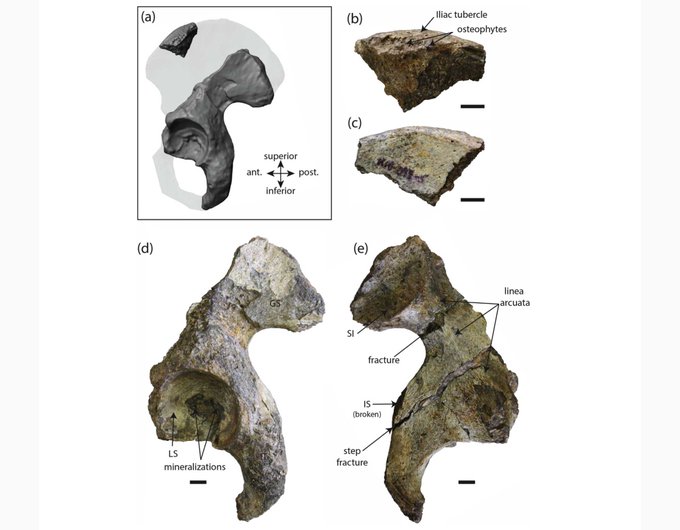postcranialのTwitterイラスト検索結果。 11 件
A new paper I'm on is out today! Major congrats to @J_BenitoMoreno, as this is mostly work from his PhD! We describe the postcranial skeleton of Ichthyornis based on new specimens, which we hope will inform future studies on modern bird origins. https://t.co/MNEWFYY2eh #dinosaurs
Announcing the postcranial description of Wendiceratops pinhornensis and a taphonomic analysis of the oldest monodominant ceratopsid bonebed by Sebastian Scott, @DrMichaelJRyan & @DavidEvans_ROM
https://t.co/jRjPD3ooSr
While the crania from Omo Kibish have received more attention than the postcranial skeleton of Omo 1, @ashleyshammond and coworkers found that the fragmentary left hipbone has low iliac flare and smaller iliac tubercle like hipbones of most living people. https://t.co/miX56yTTpL
@CampAriel 's
"What #Fish Can Teach Us about the #Feeding Functions of #Postcranial #Muscles and Joints"
https://t.co/s7yeqP0VOX
is now free to read!
#biology #ecology #vertebrate #musculoskeletal
Our August issue includes the first description of the postcranial #skeletal development of grey mullets, with important insights for understanding adult #morphology and implications for #aquaculture.
Read it here: https://t.co/jr8NhmTJsY
The "Ardi" skeleton from Aramis, Ethiopia, provides the most complete cranial, dental, and postcranial evidence of any hominoid from the Early Pliocene. Some of its features point to a relationship with later #hominin remains. #paleoanthropology
Our article with @Val_Fisch on the postcranial skeleton of Cerrejonisuchus (Dyrosauridae) has been published today in @thePeerJ !
To celebrate, here is a personal reconstruction of the beast🐊
https://t.co/iGPFqZVoVs
#EvolutionaryStudies #Paleontology #Taxonomy #Dyrosauridae
The Dmanisi site has some of the most informative postcranial remains of Homo erectus, telling us about the body size and locomotion of this #hominin species. D4167 comes from an individual of around 155 cm in stature. #paleoanthropology
Few fossil #hominin samples preserve evidence of the postcranial skeleton in abundance, but Homo naledi from the Dinaledi Chamber is one of them. These fossils are only around 250,000 years old, but the scapula resembles some of the earliest known hominins. #paleoanthropology
Detailed information on "Postcranial anatomy and osteoderm histology of Riojasuchus tenuisceps and a phylogenetic update on Ornithosuchidae (Archosauria, Pseudosuchia)" by Belén von Baczko et al. - https://t.co/U5itWr8MAl #paleontology #rioja #argentina #crocodiles #cocodrilos #c
Check out our new paper, led by @ImperialRSM PhD student @JonathanRio6, on the early alligator relative Diplocynodon hantoniensis, which lived in the UK nearly 40 million years ago. We demonstrate that fossil crocodiles had postcranial skeletons too... https://t.co/qz1fJUqfIo 🐊

























